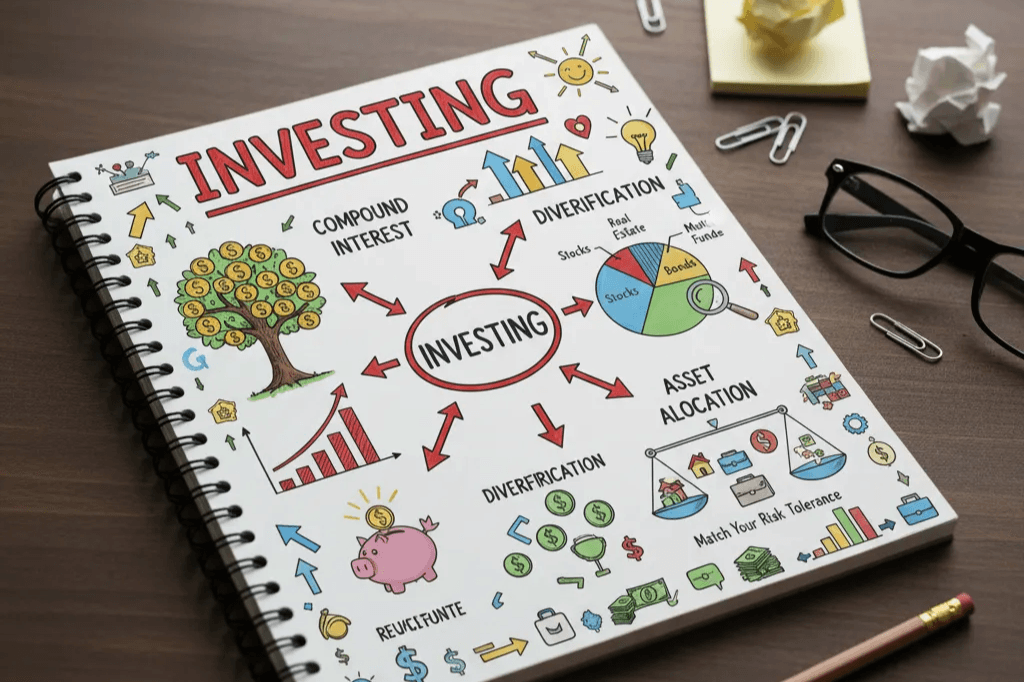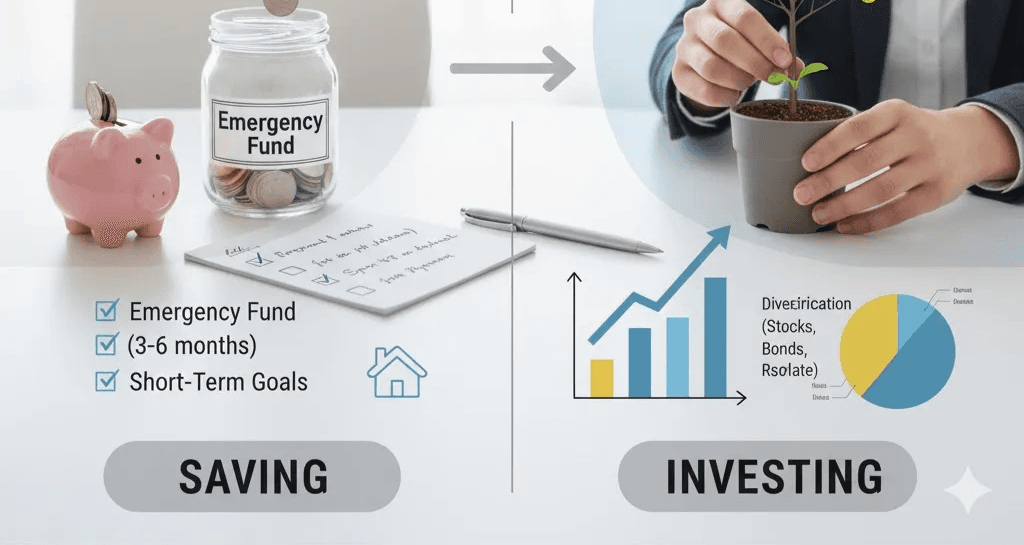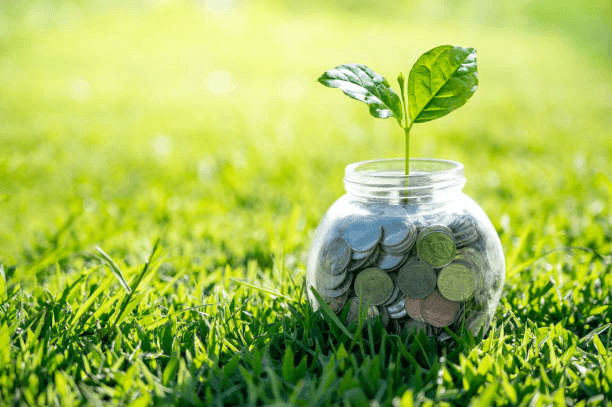How to Save (and Know When to Invest Instead)
10/22/2025
Dolapo Makanjuola
Learn how to balance saving and investing. This guide breaks down when to keep your money safe and when to make it grow so you can build real financial stability without stress.

How to Save (and Know When to Invest Instead)
- 1.Understand What Saving Really Means
- 2.Know Why You’re Saving
- 3.Build a Habit, Not Just a Balance
- 4.Understand the Limitations of Saving
- 5.Know When to Move from Saving to Investing
- 6.Learn from Real-Life Money Stories
- 7.The Balance: Save for Safety, Invest for Growth
- 8.Conclusion
Saving is one of those topics everyone thinks they understand until you realize there’s more to it than keeping money in a bank account or under your pillow. We all talk about “rainy days,” but if you’re not careful, those days can stretch into weeks, months, or even years, and before you know it, your savings have lost value, or worse, disappeared, spent into an everyday affairs.
Now, don’t get me wrong savings isn’t bad. It’s necessary. But if all you ever do is save, you’ll eventually find yourself dipping into that pot little by little until it’s gone. Investing, on the other hand, is like planting seeds. Some may take time to grow, some may not sprout at all (yes, there’s risk), but the potential is there for your money to multiply rather than just sit idle. The seeds are fragile at first; investing is the same early returns may be slow, early losses possible, but over time a well-nurtured investment can bloom.
The basic idea of saving that we’ve been taught is simply keeping some money aside instead of spending it all at once. It’s the part of your income you don’t use right away but tuck away for later. Simple enough, right? The problem about that at times is that its where a lot of us stop. We treat savings as the endgame as though stacking cash in a piggy bank or bank account is the ultimate financial wisdom. Sure, savings matter (you can’t knock the idea of having money for rainy days), but money has this sneaky way of losing value over time. Inflation rises, exchange rates wobble, and what felt like a safety net today might not hold as much weight tomorrow.
That’s when we learn about the 3 Ms of finance: Also check out (The Art of Mastering the 3 Ms of Money)
- Money Making (earning it)
- Money Management (saving and budgeting it)
- Money Multiplication (growing it)
Most of us get stuck in the second M saving without ever moving to the third.
The Case for Investments is where the shift happens: instead of keeping all your money locked away for “rainy days,” why not plant some of it where it can grow? That’s where investments come in.
Now, don’t get me wrong savings isn’t bad. It’s necessary. But if all you ever do is save, you’ll eventually find yourself dipping into that pot little by little until it’s gone. Investing, on the other hand, is like planting seeds. Some may take time to grow, some may not sprout at all (yes, there’s risk), but the potential is there for your money to multiply rather than just sit idle. The seeds are fragile at first; investing is the same early returns may be slow, early losses possible, but over time a well-nurtured investment can bloom.

Investments aren’t just about stocks or real estate. Sometimes, the best investments are in yourself:
- Learning a new skill and monetizing it
- Taking a course that boosts your career
- Building something small that can grow into a side hustle
Even education, when paired with action, is a form of investment. It’s not about stacking degrees just for the bragging rights it’s about using what you’ve learned to create opportunities. And yes, investments come with risks. That’s the scary part. Unlike savings, there’s no guaranteed return. But then again, isn’t there also a risk in keeping your money idle and watching inflation chip away at it? The key is to have a strategy: start small, diversify, and most importantly, be intentional. You don’t have to throw all your money into the stock market tomorrow. Even channeling a portion of your savings into personal growth or low-risk ventures is a step toward multiplication. So here’s a highlight on the strategy to consider how
to save and know when to invest instead:
Understand What Saving Really Means
Saving, in plain terms, is setting aside money instead of spending it all at once. It’s financial self-control a way to build a cushion for future needs or emergencies. But here’s the thing: saving isn’t the end goal. It’s the starting point. Think of saving like storing seeds. You don’t just keep them locked away in a jar forever. You save them for when it’s time to plant. The purpose of saving is to prepare you for opportunities not just survival.
“Do not save what is left after spending; instead spend what is left after saving.” Warren Buffett
Know Why You’re Saving
A lot of people save without direction. They save because it’s what responsible
adults are supposed to do. But money without a purpose tends to drift. When you
save, make it work. Are you saving for an emergency fund? To buy tools or gear
for a side hustle? To fund a future investment? Having a goal shapes your saving
habits and helps you stay consistent even when temptation strikes. If you’re
saving just for the sake of saving, chances are, when that “rainy day” comes,
you’ll drain your savings with no plan to refill it. But if your savings are tied to
growth or purpose, you’ll treat them like seeds meant for a harvest.
Build a Habit, Not Just a Balance
The biggest mistake people make is thinking saving is about how much you have.
It’s really about how consistently you do it. Start with what you can, not what you
wish you could. Whether it’s ₦1,000 a week or ₦10,000 a month, build a pattern.
Consistency builds discipline, and discipline builds freedom. Set up automatic
transfers if you can make saving less of a decision and more of a reflex. Because
the truth is, if you wait till you “have enough” to start saving, you might never start
at all.

Understand the Limitations of Saving
Now here’s where things get interesting. Saving is good but it’s also limited. Money sitting idle slowly loses value because of inflation and currency fluctuations.
That’s why financial experts talk about the “3 Ms”:
- Money Making – how you earn
- Money Management – how you save and spend
- Money Multiplication – how you grow it
Most people stop at the second stage. They save, but never multiply. The truth? You can’t save your way to wealth. You can only save your way to stability. To grow, you’ll need to take that next step investment.
Know When to Move from Saving to Investing
So how do you know it’s time? A good sign is when your savings are stable
enough to handle unexpected expenses, and you’ve got something left over
consistently. That’s when your money should stop sleeping and start working.
Even investing in yourself your education, your craft, your growth is a form of
multiplication. Yes, investment carries risk. But doing nothing carries risk too. The goal isn’t to avoid risk; it’s to manage it wisely.

Learn from Real-Life Money Stories
Think about the winners of hat-shows, lotteries, or big cash prizes. Many of them
walked away with life-changing sums, but years later, several were back to square
one. Not because they didn’t have money but because they didn’t work the
money.
One example is Michael Carroll, who won about £9.7 million in the UK National Lottery in 2002. Within years, he returned to his old job as a refuse collector, citing that he “almost broke” after spending, poor investments, and lack of financial strategy.
If you’ve followed up on some past winners of shows like Who Wants to Be a Millionaire?, you’ll notice a sad pattern. Many of them walked away with life-changing sums, but a few years later, they were right back where they started sometimes even worse off. Why? Because without a plan to manage and multiply that money, it slipped through their fingers. The cars, parties, and quick thrills were exciting in the moment, but they weren’t sustainable. The money was spent, but it was never truly put to work.
These stories show that sudden money without direction is a trap. Money needs to be managed, multiplied, protected.
The Balance: Save for Safety, Invest for Growth
The best part about this is in the balance. Saving keeps you secure; investing
helps you expand. You need both. Save enough to stay grounded, but don’t let
fear keep your money buried. Every coin kept aside is a potential seed for growth.
And just like any farmer, you’ll need to know when it’s time to plant.

Conclusion
So here’s where we’ve landed: You can’t keep saving endlessly just to watch my
money shrink in value. Yes, savings will always be important it’s a cushion for
emergencies. But beyond that, its learning to see money as something to put to
work, not just something to hoard.
Financial wisdom sounds fancy, but at its core it’s this: save enough to stay safe,
and invest enough to grow.
But one thing to know for sure money isn’t just about surviving rainy days. It’s also
about preparing for sunny ones.
“Financial wisdom isn’t about having more money. It’s about knowing what to do with the little you have.”


